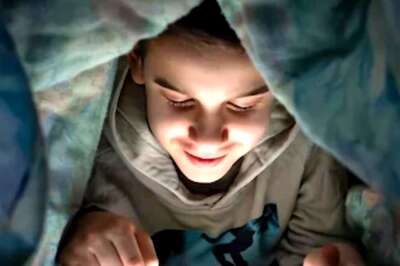
views
Setting the Experiment Up
Gather the necessary materials. Separating hydrogen and oxygen from water is done through electrolysis. To do this experiment, you will need the following items: Table salt (kosher salt is best since it’s always pure NaCl). You can use baking soda if you don’t have salt. A 9-volt battery. Two metal push pins (or two metal spoons and two alligator clips). The metal push pins are easier to use, but we’ll cover both variations. Most tutorials out there use the alligator clips, though. Water (distilled water is best, but tap water is fine, too). Two glass test tubes. A plastic cup.
Stick the push pins through the bottom of the cup. The distance between each pin must match the distance between the two terminals on the 9-volt battery (so that the metal on each pin touches each terminal). Stick the pins through the bottom of the cup so the pointy bits are inside of the cup. Variation: If you’re using alligator clips and spoons, connect the alligator clips to the ends of the spoon so that each spoon has its own cable.
Fill the cup with water and dissolve a spoonful of salt or baking soda in it. By adding salt or baking soda to the water, you increase the conduction of electricity through the water. Add a cup of warm water to your glass and a tablespoon of salt or baking soda. Aim for about 1-part salt or baking soda to 10-parts water. If you don’t get any bubbles when you start the experiment, add more salt.
Separating the Oxygen and Hydrogen
Connect the battery to the pins or alligator clips. If you’re using push pins, set the cup on top of the battery so that one pin rests on the positive terminal and one pin rests on the negative terminal. If you’re using alligator clips and spoons, attach one clip to the positive terminal and one clip to the negative terminal. The reaction is starting! Notice how the spoons or pins start bubbling? They’re beginning to separate the hydrogen and water. The spoons cannot touch one another. If they touch, the reaction will stop as you break the circuit.
Set the test tubes upside down over the pins or spoons. Set the tubes upside down in the water over the pins or directly over the tips of the spoons where the bubbles are coming out. It’s 100% okay if the tubes fill with water—the gas will displace the water. You are now collecting hydrogen and oxygen separately! The hydrogen and oxygen won’t have a color. You can only see the gas by watching the amount of air in each tube expand. The color of the water will start to turn light brown as this happens. How do you know which gas is which? After a few seconds, you’ll notice the gas is filling up in one tube more quickly than the other. The tube with more air is filled with hydrogen. Remember, H20 is two hydrogen and one oxygen, so the tube with twice as much gas is the hydrogen.
Dilute the water with vinegar and clean everything once you’re done. Because you removed some of the hydrogen and oxygen molecules from the water, you’ve actually produced lye as a byproduct. Wash the spoons and test tubes with soap and water, and add enough vinegar to the lye water to change the color back to light brown. Pour out the tinted lye water in the sink. If you don’t add vinegar to the lye, it may damage your sink or the pipes. You’ve also produced a tiny amount of chlorine gas during this experiment. Don’t worry though, you haven’t created nearly enough to be dangerous.




















Comments
0 comment